
views
Making a Classic Rope Swing

Find the perfect tree and branch. There are many aspects to consider when making a swing that is both safe and long-lasting. If your yard doesn't have a tree with a branch that meets these standards, consider a different project. Oak trees are ideal, but any type of sturdy hardwood tree may be used. Evergreens and fruit trees should be avoided. Pick a healthy branch that is at least eight inches in diameter. Carefully inspect for any signs of disease or splitting. A sickly branch is more likely to break off and fall, potentially causing serious injury to anyone below. The placement of your swing should be at least three to five feet out from the tree's trunk. Press down on the branch at the point where you intend to hang your swing. If the branch bounces, choose a sturdier one. Do not pick a branch that is too high off the ground. Twenty feet should be the maximum, but if you are making a swing for a young child, consider a lower branch. Remember that the higher the swing's attachment point, the greater the height your child may fall from.
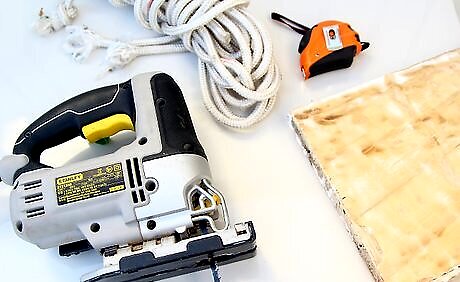
Gather your materials. You will need wood, rope, twine, three-inch deck screws, wood glue, fine grit sandpaper, two stainless steel quick link carabiners, and the right tools for the job. For tools, you will need a saw, a leveler, measuring tape, a sanding block, and a cordless drill. Buy enough 1.5-inch thick pressure treated wood for the job. You will need enough for three 7.25-inch wide pieces: one measuring 36 inches in length and two that are each 4 inches long. A two-by-eight board that is four feet long will be the easiest to work with. (If you are new to woodworking, keep in mind that the actual width and thickness of a two-by-eight are 7.25 inches and 1.5 inches respectively.) You will need a rope that is twice your planned swing's height (from the branch to the seat) plus an additional 12 feet. Use twisted polypropylene rope at least 3/8 inches in diameter. Keep in mind that nylon rope is typically too slippery for a good swing and a natural-fiber rope will eventually rot. Cut the rope into four pieces: two 10-foot lengths and two that are one foot longer than your swing's height.
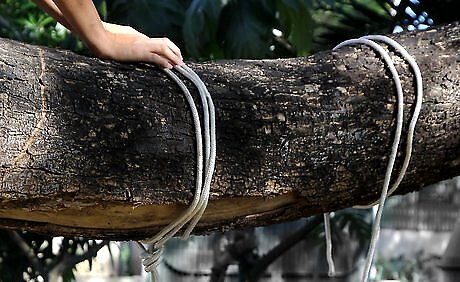
Secure the long ropes to your branch. Throw one end of each rope up over the branch. Position the two ropes so that they are slightly over three feet apart. Tie a running bowline slip knot to one end of each rope. Next, thread the free end of each rope through its corresponding knot. Tug each free end to tighten the knot onto the branch. This type of knot is very secure but will also expand with the growing tree. If needed, you can attach one end of each rope to a rock with some twine before attempting to throw it. This extra step will make getting the ends up over the branches much easier.

Cut your wood. Remember that the base of your swing will be made up of three rectangles that will all be 7.25 inches wide. Mark two rectangles that are 4 inches for the supports and a third that is 36 inches for the main seat. Double-check your measurements before you begin sawing.

Sand down sharp edges. To avoid the potential problem of the swing's seat cutting into the rider's thigh, sand down the front and rear top edges of your main seat piece. These will be two of the long edges on the same face of the board. You may also choose to sand down the other edges of the seat, but this is not necessary.
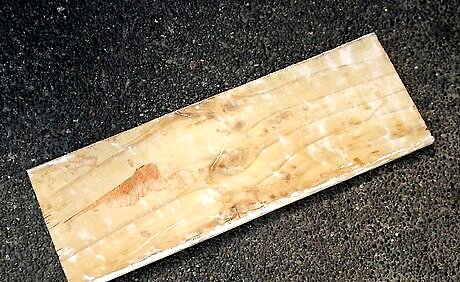
Put the seat pieces together. Arrange the two supports each on opposite ends of the main board. If you only sanded down the top edges, make sure the support pieces are on side opposite from where you sanded. First, secure the pieces in place with wood glue. Next, reinforce the attachment using five deck screws for each support piece. Pattern the screws so that one is near each corner with the fifth directly in the center.
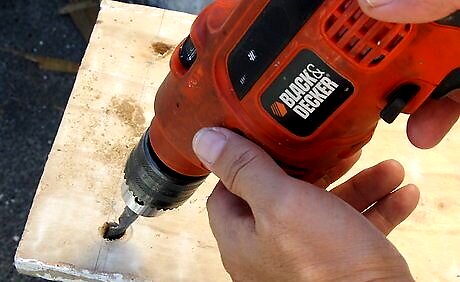
Drill holes to attach your rope. Place two holes on each end through both the seat and its supports. Try to make each hole the same distance from the supports' edges and the center screw. The two holes on each side should create a line parallel to the seat's short side and perpendicular to its long side. Make sure the holes are wide enough to thread your rope through but not much wider.
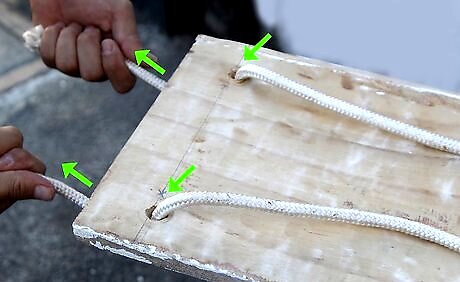
Thread each end of your 10-foot ropes through the holes. Use one rope for the two holes on one end and the second rope on the other. The two ropes should not cross. Position the ropes so that their ends are on the same side as the support pieces.
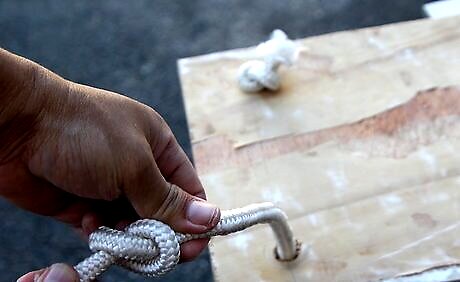
Secure the ropes. Tie four stopper knots, one at each end of the ropes underneath the swing seat. Do not tie the knots too tight in case you need to adjust them later. There should now be two slings, one attached to each end of the seat.
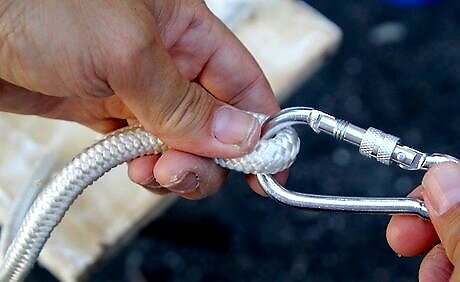
Attach the slings to the long main ropes using two quick links. Unscrew your carabiners and hook one onto each sling. Screw the locking sleeves back on tight. Next, tie the ends of each rope hanging down to the quick links using a secure knot, such as a buntline hitch.
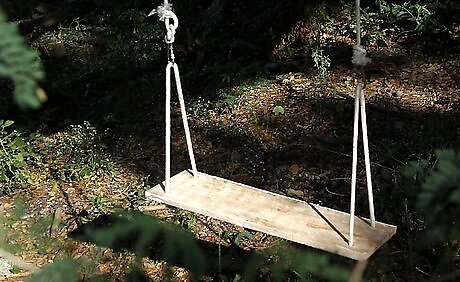
Level the seat and secure the stopper knots. Place a leveler on the seat to check for unevenness. If your seat isn't level, adjust the stopper knots accordingly. For example, if the seat is dipping forward and to the left, pull a little more rope through the bottom and move the knot up. Once the seat is level, tighten your knots. Your swing is now ready for use.
Making a Tire Swing
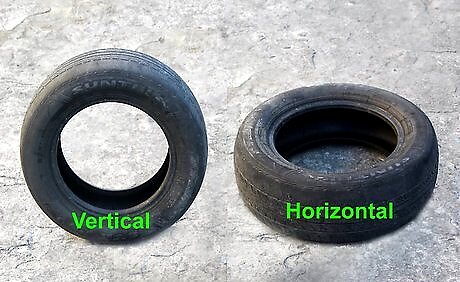
Pick a tire swing style. There are two main types of tire swings: horizontal and vertical. Horizontal tire swings have three different attachment points to hold the tire level. In contrast, vertical tire swings hang from a single attachment. Both ways of making a tire swing are relatively similar, but there will be a few minor differences. In general, vertical tire swings are simpler and require less time to make.
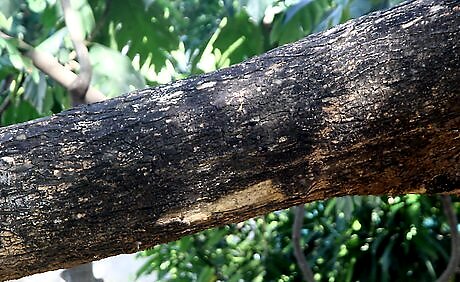
Choose the right tree and branch. A branch for a tire swing has most of the same requirements as one for a rope swing. You'll need to find a sturdy hardwood tree, such as an oak, with a suitably-sized healthy branch. The major difference is that more clearance away from the trunk is required for tire swings compared to rope swings, as tire swings are designed for more sideways movement. Allow at bare minimum 4 feet of space between the attachment point and the tree trunk. Even more space may be required if the branch you pick is higher than 10 feet.
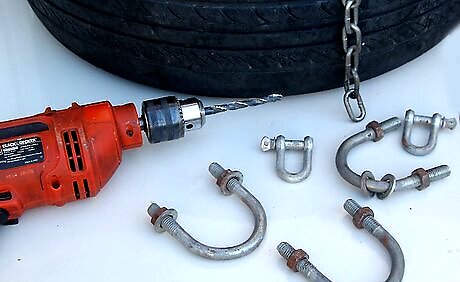
Gather your materials. The main component of all tire swings is a tire. You can find cheap or even free tires from anywhere that recycles them, such as at a tire dealership. A tire with worn-down treads isn't suitable for a car, but it will make a great swing. You will need a cordless drill for both types of swing. For a horizontal tire swing, you will need four equal lengths of steel chain, four stainless steel quick links, one locking swivel hook, and three steel U-bolts. The chains should be at least 3/8 of an inch in diameter and between 3 and 5 feet long. For a vertical tire swing, the only other necessary item is a strong rope.
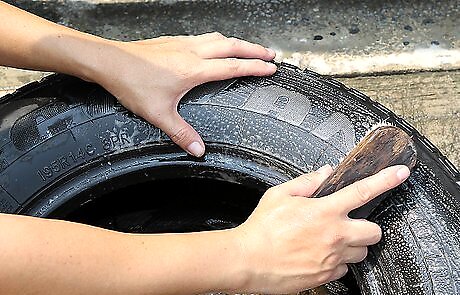
Wash the tire thoroughly. Because you're most likely using a recycled tire, it will probably be covered in grime. Even a new tire has the potential to stain clothing and skin. Use a high pressure hose on your tire before making it into a swing. If you don't own a high pressure hose, consider making a trip to a car wash and using one there.

Drill a few holes in your tire. When it rains, you will want the water to drain out of your swing to keep from making a mess. Position these holes at what will be the part of your swing closest to the ground. For a horizontal swing, drill the holes into the center of one sidewall. For a vertical swing, drill one or two holes into one end of the wheel's tread.

Attach the main rope or chain to the tree. Before setting up your tire any further, go ahead and make sure it has a secure place to hang. For a horizontal swing, simply hook one length of chain around the branch. Then, fasten it into a loop with a quick link. Finally, hang the swivel hook from the quick link with the hook portion facing down. For a vertical swing, Throw your rope over the tree limb. Tie a slip knot, such as a running bowline, onto one end of the rope and then thread the free end through the knot. Pull the free end so that the knot reaches the branch, attaching the rope to the tree.
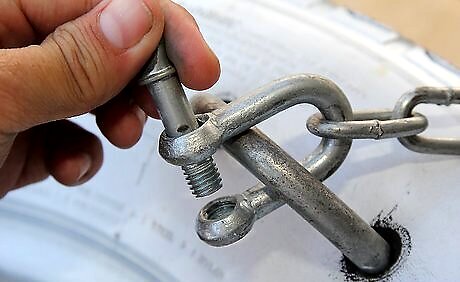
Attach the tire to the hanging rope or chain. Once you've completed this step, your swing should be ready to use. For a horizontal swing, begin by drilling three sets of two holes on the shoulder of the tire opposite of your drainage holes. Separate the three sets an equal distance apart so that the tire is split into even thirds. Space the pairs so that your three U-bolts can fit into them. Hook each U-bolt onto the last link of each of the three remaining chains. Place the bottom of the U-bolts through the holes you just made and fix them in place using the plates and nuts they came with. Finally, hook the last link of the chains' free ends onto the locking swivel hook. Your swing should be finished once the hook is locked into place. For a vertical swing, simply tie the free ends of your rope to the tire at the end opposite of its drainage holes. Use a square knot and double-check that the rope is secure.
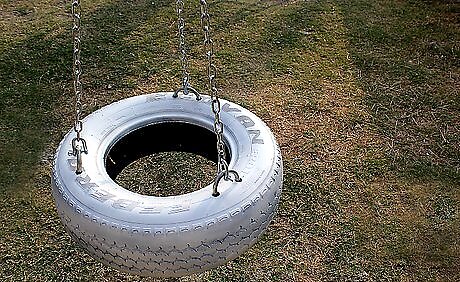
Finished.




















Comments
0 comment